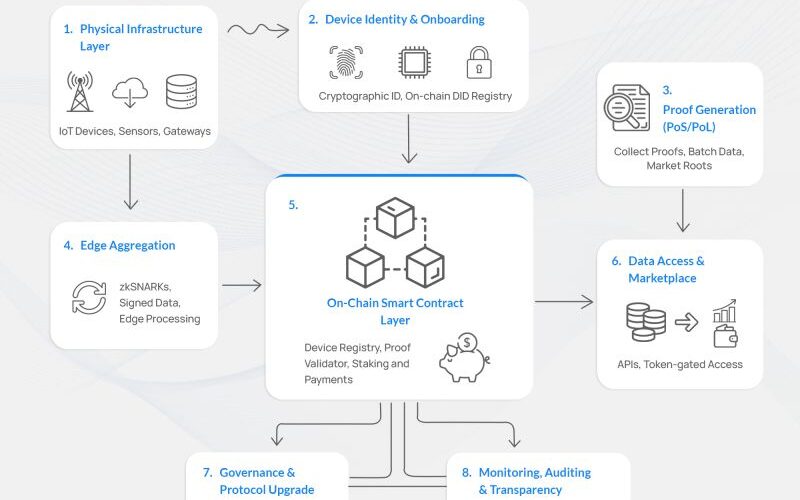What is DePIN?
DePIN is trying to tokenize bandwidth, compute, and storage. The idea is simple. The execution? Much harder.
At the architectural level, a Decentralized Physical Infrastructure Network (DePIN) combines three pieces:
-
Physical hardware: routers, sensors, GPUs, dashcams, storage drives
-
Decentralized coordination: nodes linked through a peer-to-peer network, no central operator
-
Token incentives: native assets that bootstrap supply and align contributions with demand
This setup addresses the cold-start problem. Instead of a corporation investing billions upfront, tokens reward early contributors to seed the network until customer demand appears.
The Trust Problem in DePIN
But tokenomics alone doesn’t solve the harder problem: trust in the data.
Physical inputs are noisy and adversarial. For example:
-
A router might exaggerate bandwidth
-
A GPU node might misreport compute
-
A sensor might spoof readings
Once false data lands on-chain, the incentive layer rewards it and amplifies the issue.
Why DePIN Needs AI-Based Validation
A stronger approach requires adding an AI-based validation layer on top of the blockchain. This could involve:
-
Consensus across devices: multiple independent nodes confirm the same observation before rewards are issued
-
Anomaly detection models: trained to spot patterns inconsistent with expected behavior or physics
-
Dynamic weighting of inputs: nodes with higher historical accuracy or reputation influence validation outcomes more heavily
-
Continuous retraining: models adapt as adversaries find new ways to game the system
The Convergence of Blockchain, IoT, and AI
Here’s how the layers work together:
-
Blockchain coordinates incentives and settlements
-
IoT supplies the data
-
AI filters for integrity
The interaction between these three layers is what prevents the system from rewarding noise instead of utility.
The Opportunity and the Risk
The opportunity is clear, but so is the risk.
-
Without robust validation → incentives collapse and networks remain fragile.
-
With it → DePIN can evolve into resilient infrastructure rather than speculative experiments.







